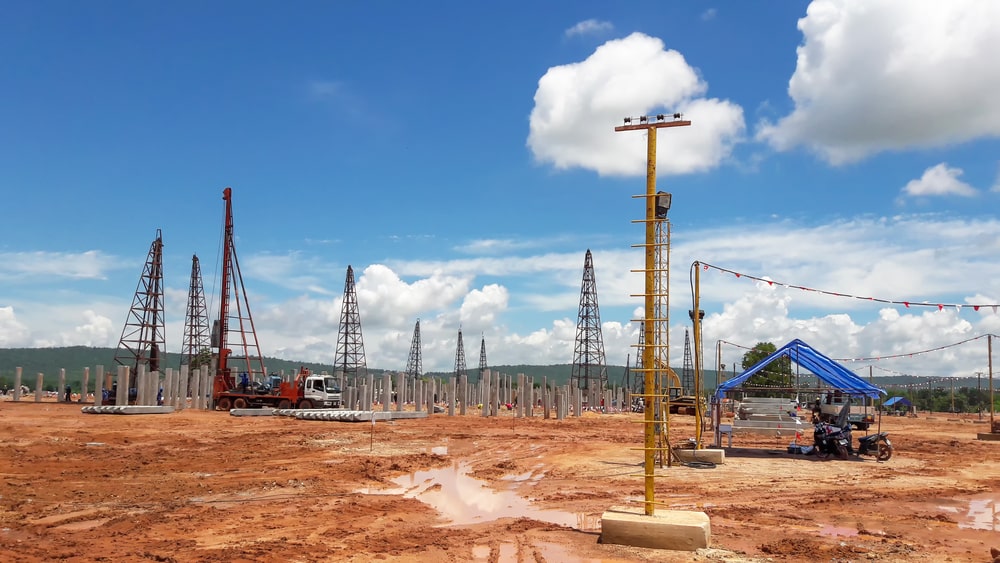Chapter 3 – Section 1: Bituminous Mixtures
- Pile Buck Guide to Soil Mechanics and Testing
- Chapter 1 – Soil Mechanics Introduction
- Chapter 2 – Identification and Classification of Soil and Rock
- Chapter 2 – Section 1: Soil Formation, Physical Properties, Moisture
- Chapter 2 – Section 2: Soil Surveys, Maps, Investigations, Samples
- Chapter 2 – Section 4: Soil Testing, Equipment
- Chapter 3 – Laboratory Tests and Index Properties of Soils
- Chapter 3 – Section 1: Bituminous Mixtures
- Chapter 4 – Field Exploration, Testing, and Instrumentation
- Chapter 6 – Soil Seepage and Drainage
- Chapter 7 – Analysis of Settlement and Volume Expansion
- Chapter 8 – Slope Stability and Protection
From ‘FM 5-472 NAVFAC MO 330 AFJMAN 32-1221(I)’ by Department of the Army
This chapter provides information on the materials used in constructing bituminous surfaces, the methods of testing these materials, and the mixes prepared from them. The design considerations—such as bearing capacity and thickness of pavements—are described in FM 5-430-00-1. Mixing and placing operations, as well as the considerations for preparing the mixes, are described in TM 5-337.
SECTION I. BITUMINOUS PAVEMENTS/SURFACES
Bituminous pavements/surfaces are a mixture of mineral aggregates, mineral filler, and a bituminous material or binder. This mixture is used as the top portion of a flexible pavement structure to provide a resilient, waterproof, load-distributing medium that protects the base course from the detrimental effects of water and the abrasive action of traffic.
Aggregates
Mineral aggregates may consist of crushed rock, crushed or uncrushed soils (including gravels and sands), slag, mineral filler, or a combination of some of these materials. Other materials that may be used as aggregate in certain geographical areas include vesicular lava and coral. Aggregates normally constitute 90 percent or more by weight of bituminous mixtures, and their properties greatly affect the finished product. The aggregate provides three basic functions when used in bituminous surfaces:
-
-
- It transmits the load from the surface down to the base course. In pavement, this is accomplished through the mechanical interlock of the aggregate particles.
- It withstands the traffic’s abrasive action. If a wearing surface were laid consisting of binder alone, it soon would be worn away by the abrasive action of tires.
- It provides a nonskid surface. A portion of the aggregate extends slightly above the normal surface of the wearing mat, thereby providing a roughened surface for tires to grip.
-
Bituminous Materials
A bituminous material is the adhesive agent or binder in a bituminous mixture. This material or binder provides two functions:
- It binds the aggregate together, holds it in place, and prevents displacement.
- It provides a waterproof cover for the base and keeps surface water from seeping into and weakening the base material.
The binder’s functions require it to be a waterproof substance having the ability to bind aggregate particles together. All bituminous materials possess these qualities due to being mainly composed of bitumen—a black solid that provides the black color, cementing ability, and waterproofing properties. Bituminous materials are classified into two main groups—asphalts and tars. They are available in several forms suitable for different procedures of mixing or application under wide variations in temperature. Some bituminous materials are solid or semisolid at room temperature. Other grades are a relatively viscous (thick) liquid at room temperature. Mixing bituminous materials with solvents or water produces cutbacks or emulsions that are liquid at atmospheric temperatures. Such liquid asphalts and tars are used for cold mixes or are applied as sprays in building pavements.
Asphalts
Asphalt is obtained only from crude petroleum and has two general classes— natural and manufactured. Natural asphalts occur in lakes (as lake asphalt), pits, or rock structures (as rock asphalt). Manufactured asphalt is produced by distilling crude petroleum (see Figure 3-1). A military engineer is seldom concerned with natural asphalts because they are not usually available in those areas of interest. Therefore, this chapter discusses the uses and testing of manufactured asphalts.
All asphalt cements are solid or semisolid at room temperature (77°F) and must be converted to a fluid state by heating, emulsifying, or dissolving in a petroleum solvent.
Grading
There are two grade scales used for identifying asphalt cement—penetration grade and viscosity grade. The penetration grade is determined by the distance a standard needle under a standard load will penetrate a sample in a given time under a given temperature condition. A correlating asphalt- petroleum number from 00 to 7 is assigned to these penetration ranges. The viscosity grade is determined using a standard viscometer under standard conditions. Table 3-1 lists the penetration ranges and correlating asphalt- petroleum numbers presently recognized along with the relative consistencies.

From ‘FM 5-472 NAVFAC MO 330 AFJMAN 32-1221(I)’ by Department of the Army
-
 SPW911 Sheet Pile Design Software
Rated 5.00 out of 5$150.00 – $599.99Price range: $150.00 through $599.99
SPW911 Sheet Pile Design Software
Rated 5.00 out of 5$150.00 – $599.99Price range: $150.00 through $599.99 -
 Sheet Pile Design (PDF Download)
Rated 5.00 out of 5$89.00
Sheet Pile Design (PDF Download)
Rated 5.00 out of 5$89.00 -
 Pile Driving (PDF Download)
$89.00
Pile Driving (PDF Download)
$89.00
-
 Marine Construction Volumes 1 & 2 (PDF Download)
$157.00
Marine Construction Volumes 1 & 2 (PDF Download)
$157.00
-
 Pile Driving (Book)
$89.00
Pile Driving (Book)
$89.00










